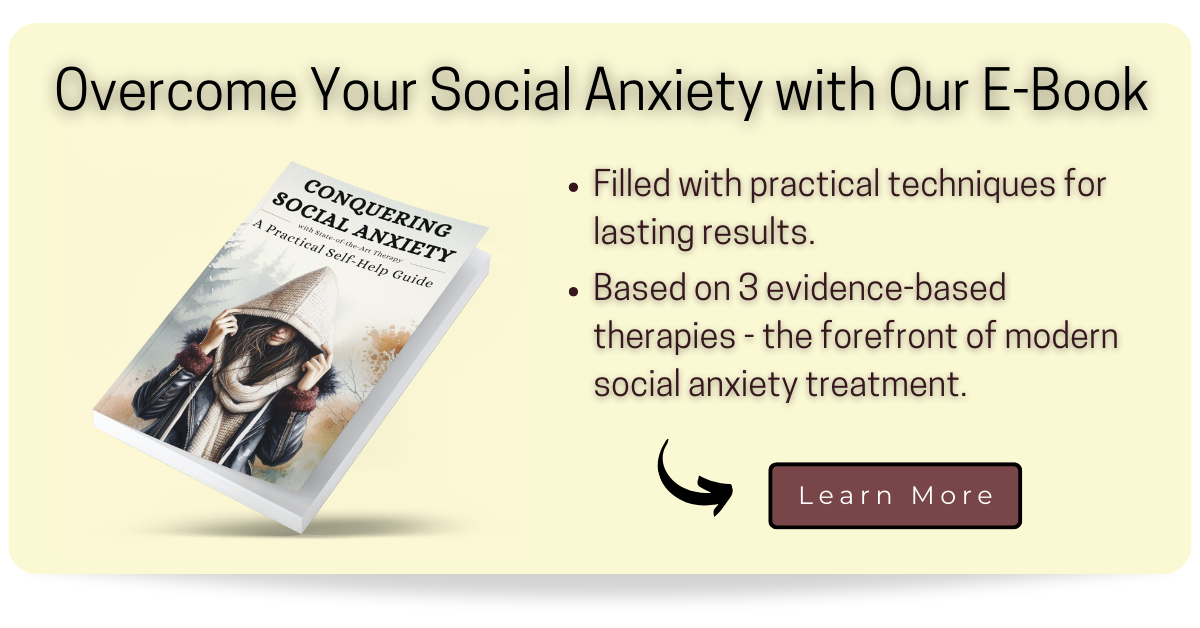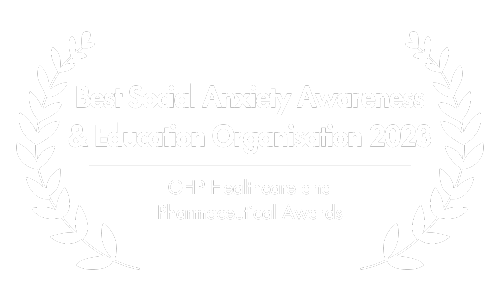Into the Depths: A Helpful Guide to Psychoanalysis for Social Anxiety
Social anxiety, a condition marked by the intense fear of social interactions and scrutiny, was officially acknowledged as a distinct disorder by the American Psychiatric Association (APA) in 1980.
This formal recognition shed light on the intricate emotional landscape experienced by individuals grappling with social anxiety.

Yet, well before its formal identification, the apprehension surrounding social situations had already captured the attention of astute observers.
One such luminary was Sigmund Freud, the trailblazer behind the establishment of psychoanalysis.
In delving into the depths of human psychology, Freud laid the groundwork for understanding the underpinnings of social anxiety, unlocking insights that continue to influence our comprehension and treatment of this complex condition.
In this article, we take a closer look at how psychoanalysis has left a lasting impact on understanding the complex world of social anxiety.

Along the way, you’ll uncover valuable insights that may provide you with some practical guidance.
Who knows, you might even find yourself considering the possibility of starting your own journey into psychoanalysis as a way to confront and conquer your social anxiety.

A. What Is Psychoanalysis?
In the eyes of Sigmund Freud (1923), psychoanalysis encompasses several key facets:
- Exploring Inaccessible Psychic Processes: It serves as a method to delve into the depths of our psyche, uncovering processes that are elusive through other avenues of exploration.
- Treating Neurotic Disturbances: Freud saw it as a treatment approach for addressing neurotic disturbances that disrupt our psychological equilibrium.
- A Repository of Psychological Insights: It forms a repository of knowledge and theory, offering profound insights into the labyrinthine workings of the human mind.
According to Freud’s perspective, individuals are enmeshed in a perpetual struggle. This struggle unfolds between our actions, our desires, and the external events that shape our lives.
Often obscured from our conscious awareness, these inner conflicts are a prime theater for unconscious drives and desires to clash against the reality of our existence.

Since these desires frequently encounter obstacles to their fulfillment and often involve contradictory aims, unresolved and concealed conflicts can give rise to issues.
These issues manifest as symptoms – like the anxiety that surfaces in social scenarios.
At its core, psychoanalysis strives to illuminate these latent conflicts, bringing them into the realm of consciousness.
In doing so, it not only enhances our understanding of our feelings and actions but also holds therapeutic potential, in and of itself.
Through this illumination, the path toward healing and transformation begins to emerge.

Comparing Psychoanalysis and the DSM-V
In clinical practice, diagnostic manuals are commonly employed, with the DSM-5 being one of the most prevalent. These manuals offer guidance for diagnoses and direct clinicians toward specific treatment paths.
However, the psychoanalytic approach takes a fundamentally distinct route.
Let’s explore the differences between the DSM-5 approach and psychoanalysis through the following comparative table to gain a clearer understanding.
| DSM-V | Psychoanalysis |
|---|---|
| APA sets generalized diagnostic criteria, akin to an objective checklist. | Diagnosis not central; patient’s unique experiences hold significance. |
| Interventions follow treatment manuals, often similar across patients. | Interventions shaped by patient-analyst curiosity and intuition. |
| Emphasis on short-term relief, potential for long-term symptom reduction. | Focus on long-term insights, self-discovery, and reduced suffering. |
These distinct approaches underscore the divergence in perspectives between the DSM-V and psychoanalysis when it comes to understanding and treating social anxiety.
As you can see, psychoanalysis focuses on the personalized exploration of individual experiences and the pursuit of long-term psychological insights and relief.

B. How Does Psychoanalysis Illuminate Social Anxiety?
While the DSM-V refers to the irrational dread of social situations as social anxiety disorder (formerly known as social phobia), within the realm of psychoanalytic and Freudian theory, it takes the shape of phobic neurosis and anxiety hysteria.
The linchpins in this intricate psychological landscape are avoidance, repression, and displacement – defense mechanisms that play significant roles.
Freud’s exploration of phobic neurosis delves into the irrational fear of a specific object, place, person, or scenario that triggers an overwhelming sense of threat.
This phenomenon is often a complex manifestation, rooted in the intricate tapestry of an individual’s life experiences.

Unveiling the origins of phobic neurosis frequently leads to moments of significance that took place during early childhood, setting the stage for the inception of these anxieties.
Psychoanalytic theory posits that these seminal traumatic encounters have been cast into the realm of the unconscious, a process known as repression.
This deliberate act of forgetting serves as a self-protective mechanism, ensuring that conscious memory does not bear the weight of these overwhelming events.
In response to such psychological dynamics, our psyche employs defense mechanisms, operating largely beneath the radar of our conscious awareness, as Freud astutely observed.

Defense Mechanisms in Phobic Neurosis (Anxiety Hysteria)
Within the realm of phobic neurosis, individuals commonly deploy three central defense mechanisms: avoidance, repression, and displacement.
Avoidance: This mechanism leads us to sidestep situations that elicit discomfort and unease.
Repression: Memories and emotions too distressing to confront head-on are relegated to the recesses of our unconscious.
Displacement: The latent fears residing in our unconsciousness often find expression when faced with a different, seemingly unrelated, object, person, or place.
These defense mechanisms, as evident, serve as protective mechanisms, shielding us from the brunt of distressing feelings and memories.

While they play a pivotal role in helping us manage challenges, especially during infancy, their utility can morph into a challenge as we mature and gain the capacity to address the very traumas they shield us from.
However, accessing and unraveling these unconscious psychological layers is no simple task due to their concealed nature.
This juncture is where psychoanalysis steps onto the stage.

C. How Does Psychoanalysis Treat Social Anxiety?
Psychoanalysis is often referred to as the “talking cure“. Through verbal expression of our internal experiences and emotions, emotional barriers can be dismantled, and hysterical symptoms addressed (Marx, Benecke, & Gumz, 2017).
Social anxiety disorder, or phobic neurosis, can find resolution through the technique of free association. In this method, patients share their stream of consciousness during sessions—thoughts, memories, emotions, words, and more. This process unveils unconscious conflicts, leading to cathartic release for the patient.
Catharsis: The process of unburdening strong or suppressed emotions, resulting in relief (Hornblower, Spawforth, & Eidinow, 2012).

Freud (1923) posited that translating experiences into words can provide answers to crucial questions:
- What is the origin of my symptoms?
- Why do I experience these symptoms?
- What significance do these symptoms hold for me?
- How can I interpret and comprehend these symptoms?
- How do these symptoms relate to my personal history?
- How can I manage these symptoms to alleviate suffering?
Integral to free association is the patient’s unwavering candor, expressing thoughts and experiences exactly as they surface, without self-censorship.
Through this process, the gates to the unconscious gradually swing open, allowing the patient to decode their symptoms at their very roots.

D. Is Psychoanalysis an Effective Treatment for Social Anxiety?
A frequent critique aimed at psychoanalysis is the lack of concrete evidence for its efficacy.
In his early writings on the subject, Freud (1916) himself acknowledged, “Psychoanalysis aims at the case by case.“
Given psychoanalysis’ focus on individual subjective experiences and its aversion to broad generalizations, conducting trials to quantify its effectiveness presents a significant challenge.
However, this skepticism has been gradually eroded over the past decades. A mounting body of case studies has illuminated the profound impact psychoanalysis can exert as a psychological treatment.
This holds true for social anxiety as well. Numerous case studies illustrate significant amelioration in individuals grappling with social anxiety disorder following their psychoanalytical journeys (McEvoy et al., 2016).

E. Crucial Factors in Psychoanalytic Treatment
The effectiveness of psychoanalysis in diminishing social anxiety is contingent upon a multitude of variables. Some of the most pivotal ones encompass:
- The patient’s dedication to their therapeutic journey.
- The competence of the psychoanalyst.
- The alignment between patient and analyst, including the development of therapeutic alliance and transference during treatment.
- The duration and frequency of sessions.
- The patient’s aspirations (seeking to eliminate social anxiety versus embracing its integration into their lives).
- The aspiration for guidance from an empathetic and inquisitive practitioner.
- The individual’s capacity for self-examination and openness to explore and dissect personal experiences.

Above all, the triumph of psychoanalysis hinges on our willingness to consistently turn our gaze inward, scrutinizing our emotions, actions, thoughts, and motives.
For those willing to undertake this endeavor and eager to unearth the underlying origins of their challenges, psychoanalysis offers a promising treatment avenue.
F. The Role of the “Good Enough Mother”
Dynamic psychology, a post-Freudian approach rooted in psychoanalysis, places a strong emphasis on interpersonal relationships. It proposes that problematic patterns in our interactions with others can give rise to psychological challenges, such as social anxiety.
Among the pioneers of this approach, Donald Winnicott focused keenly on the mother-child relationship within his patients. He believed that this foundational connection shaped our relational tendencies throughout our lives.
Winnicott introduced the concept of the “good enough mother“, which remains integral to psychodynamic therapy today (1949).

According to his view, a mother need not be flawless for a child to develop an authentic sense of self. Instead, the mother’s responses must be sufficiently nurturing to foster basic trust in oneself, others, and the world.
However, when a child’s essential needs – like shelter, food, and affection – are unmet, the formation of an authentic self becomes hindered. Instead, the child resorts to crafting a false self as a shield against threats to their existence.
Interestingly, an excessive focus on caregiving can also lead to the emergence of a false self. This can occur when mothers are overly protective, curbing a child’s personal autonomy, such as exploration or expression of negative emotions.
The development of an authentic self lays the groundwork for healthy interpersonal relationships in adulthood. In contrast, those reliant on a false self tend to struggle in their interactions.

Research interviews conducted with socially anxious individuals (McEvoy et al., 2016), guided by their maternal relationships, unveiled distinctive relational patterns in adulthood:
- “A Critical Voice”: Originating from a hostile family environment with a critical mother, this pattern manifests as self-criticism, low self-esteem, an insatiable need for approval, and fear of exposing emotions.
- “A Passive Presence”: Evolving when the mother is passive-aggressive or mostly absent, this pattern results in insecure attachments, feeling burdensome to others, using relationships as social tools, and relying on others for even basic tasks.
- “Failure to Launch”: Emerging from a lack of support during the transition from adolescence to adulthood, individuals experience feelings of inadequacy, a sense of unpreparedness, and avoidance of social scenarios.
- “Behind the Mask”: This pattern involves wearing a facade in relationships and social settings to appear different from one’s true self. It encompasses pretending to be fine, fearing discovery of flaws, and desiring to remain hidden behind a mask.
In each instance, the presence of a “good enough mother” during childhood was notably absent, suggesting that these patterns developed in response.

G. The Significance of Individuation and Authenticity
The above examples underscore the profound influence that early parental relationships, particularly with the mother (or primary caregiver), have on lifelong interactions with others.
To mitigate and address problematic relational dynamics, it’s important to recognize the pivotal roles of individuation and authenticity in relationships.
Individuation pertains to the process of differentiation from others, often beginning with separation from the mother during early childhood.
This journey facilitates the emergence of a distinct identity, allowing individuals to consciously experience autonomous thoughts, emotions, and preferences that are detached from external influences.

Authenticity, on the other hand, revolves around the act of unveiling one’s genuine self to others.
According to Winnicott, an authentic self embodies the capacity to recognize intrinsic needs and personality, and to disclose and express them truthfully to those around.
By embracing and nurturing individuality while presenting it authentically to others, a heightened autonomy is cultivated that transcends the need for external validation or the compulsion to appease others.
In doing so, individuals not only liberate themselves from the confines of toxic relational patterns established in their formative years, but also forge more fulfilling connections.
This journey also holds the potential to alleviate social anxiety along the way.

H. Duration and Frequency of Psychoanalytic Sessions
One distinguishing characteristic of psychoanalysis is its commitment to thorough exploration and understanding.
Unlike some shorter-term therapeutic approaches, psychoanalysis typically involves longer and more in-depth treatment.

Long-Term Commitment
Psychoanalysis is known for its long-term nature, often spanning several months to years. This extended timeline allows for a comprehensive examination of unconscious thoughts, feelings, and patterns of behavior that contribute to social anxiety.

Frequency of Sessions
Psychoanalytic sessions are usually held multiple times a week, often ranging from two to three sessions. This frequent interaction fosters a deeper therapeutic relationship and enables the patient to delve into their experiences and emotions in a more thorough manner.
Consistency Is Key
The effectiveness of psychoanalysis is closely linked to the consistency and frequency of sessions. Regular engagement provides the patient with the opportunity to explore their thoughts and feelings over time, leading to a greater understanding of the roots of their social anxiety.

Depth of Exploration
Psychoanalytic therapy encourages patients to engage in free association, expressing whatever comes to mind without censorship. This process of open dialogue allows for the unveiling of unconscious conflicts and insights into how they manifest in daily life.
Patient and Therapist Collaboration
The therapist-patient relationship is a pivotal aspect of psychoanalysis. Over time, this relationship becomes a space of trust and exploration, allowing patients to gradually open up and share their inner experiences.
Personalized Journey
Each individual’s therapeutic journey is unique, and the duration of psychoanalysis can vary based on the complexity of personal experiences and the progress made. While psychoanalysis requires dedication, it has the potential to lead to profound insights and lasting change in how one relates to social anxiety.
Keep in mind that the degree of commitment to psychoanalysis reflects the depth of its intended exploration and understanding.
This approach is best suited for individuals who are ready to invest in a comprehensive exploration of their inner world and are seeking long-lasting transformation in their relationship with social anxiety.

I. Insurance Coverage and Payment for Psychoanalysis
In most parts of the world, psychoanalysis is considered a specialized and often longer-term therapeutic approach. As such, its coverage and payment options may vary compared to more standardized forms of therapy.
For example, psychoanalysis is widely practiced in the United States, Canada, the United Kingdom, and Australia, but insurance coverage may be limited.
Many health insurance plans tend to cover short-term and symptom-oriented therapies, so psychoanalysis must be paid for out of pocket for many people.

Out-of-Pocket Payment
Psychoanalysis often involves multiple sessions per week over an extended period. Due to its intensity and duration, it may require a financial commitment beyond what insurance plans typically cover.
Individuals pursuing psychoanalysis should be prepared for out-of-pocket expenses and discuss payment arrangements with their chosen psychoanalyst.
Financial Considerations
While psychoanalysis can be a valuable investment in one’s mental well-being, it’s important to factor in the financial aspects when considering this form of therapy.
Some psychoanalysts offer sliding-scale fees or payment plans to accommodate different financial situations.

Research and Inquiries
Before embarking on psychoanalysis, it’s advisable to research the options available in your area and inquire about fees, payment plans, and potential insurance coverage.
Understanding the financial aspects can help you make an informed decision about pursuing this therapeutic path to address social anxiety.

As we conclude our exploration of psychoanalysis for social anxiety, we’ve journeyed through the depths of this therapeutic approach, guided by the wisdom of Freud and Winnicott.
Psychoanalysis offers a distinctive route to tackling the complexities of social anxiety, rooted in individual experiences.
Delving beyond surface-level remedies, psychoanalysis embraces the uniqueness of each patient.
Free association – a cornerstone technique – unveils hidden thoughts, feelings, and early-life dynamics. Relationships, especially with caregivers, hold crucial insights into the origins of social anxiety.

Diverging from conventional treatments, psychoanalysis probes unconscious drives and relational patterns. Concepts like the “not good enough mother,” individuation, and authenticity come to the forefront, revealing pathways to transformation.
In essence, psychoanalysis invites a transformative journey – one where introspection and self-discovery pave the way to renewed relationships and self-awareness. As you consider this therapeutic odyssey, may our insights illuminate your path toward navigating social anxiety with the nuanced lens of psychoanalysis.

If you’re eager to delve into various therapeutic avenues for tackling social anxiety, we encourage you to explore our comprehensive therapy guide by clicking here.
Likewise, for a comprehensive overview encompassing therapy, medication, and self-help avenues, dive into our in-depth guide by clicking here.
Curious about medication solutions for social anxiety? Satiate your curiosity by clicking here to discover our comprehensive article outlining scientifically proven effective medication options.
Still have questions lingering? Then sign up for our Free 7-day Email Course; we’re here to guide you.

American Psychiatric Association. (2013). Diagnostic and Statistical Manual of Mental Disorders (5th ed.). American Psychiatric Publishing.
Freud, S. (1923). Two Encyclopaedia Articles: “Psychoanalysis” (Standard Edition, Vol. 18). London: Hogarth Press.
Freud, S. (1895). Obsessions and Phobias. The Standard Edition of the Complete Psychological Works of Sigmund Freud, Volume III (1893-1899): Early Psycho-Analytic Publications. London: Hogarth Press, 1953.
Freud, A. (1946). The Ego and the Mechanisms of Defense. International Universities Press.
Freud, S. (1916). Introductory Lectures on Psycho-Analysis. Lecture XVI: General Theory of the Neuroses. The Standard Edition of the Complete Psychological Works of Sigmund Freud, Volume XVI (1916-1917): Introductory Lectures on Psycho-Analysis and Other Works. London: Hogarth Press, 1955.
Freud, S. (2005). The Standard Edition of the Complete Psychological Works of Sigmund Freud, Volume III (1893-1899): Early Psycho-Analytic Publications. London: Hogarth Press.
Hornblower, S., Spawforth, A., & Eidinow, E. (2012). The Oxford Classical Dictionary. Oxford University Press.
McEvoy, B., O’Connor, J., & McCarthy, O. (2016). Behind the Mask: A Psychodynamic Exploration of the Experiences of Individuals Diagnosed with Social Anxiety Disorder. Retrieved from https://pubmed.ncbi.nlm.nih.gov/27898276/
Winnicott, D. W. (1949). Mind and its Relation to the Psychosoma. In D. W. Winnicott (Ed.), The Collected Papers of D. W. Winnicott (Vol. 1, pp. 295-305). Tavistock Publications.

About the Author: Martin Stork
Martin is a professional psychologist with a background in physical therapy. He has organized and led various support groups for people with social anxiety in Washington, DC and Buenos Aires, Argentina. He is the founder of Conquer Social Anxiety Ltd, where he operates as a writer, therapist and director. You can click here to find out more about Martin.











